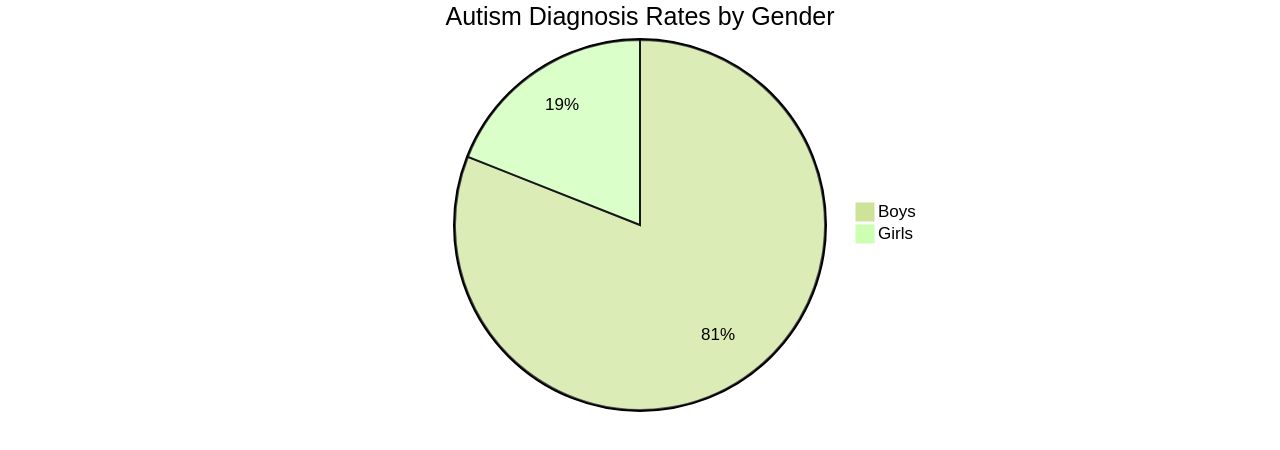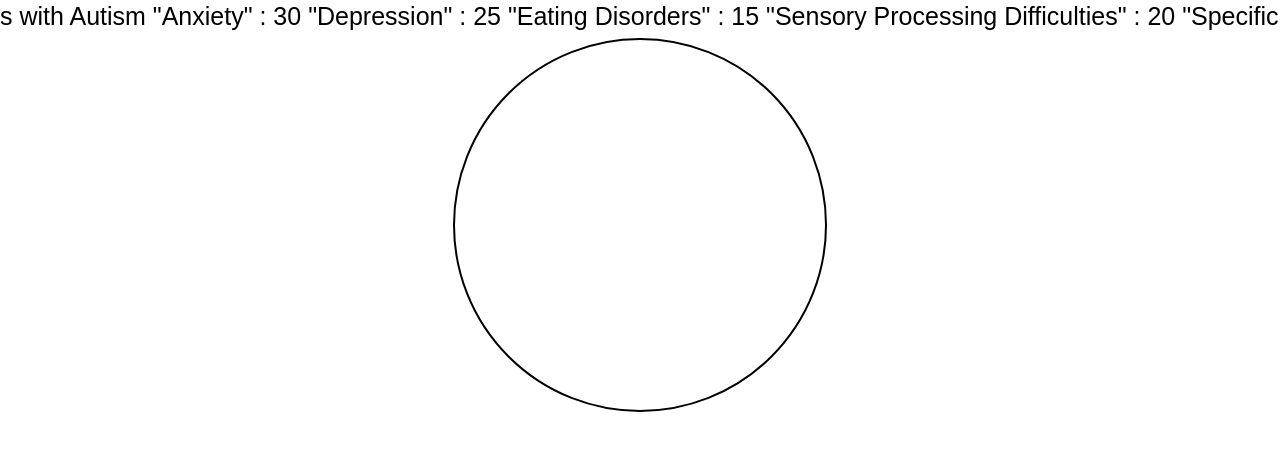Introduction
Recognizing the unique challenges faced by girls with autism is imperative for providing effective support. Girls on the autism spectrum may exhibit different characteristics that can lead to underdiagnosis or a delayed diagnosis, especially if they display behaviors that align with societal expectations of femininity.
This article explores the diagnostic sex/gender bias in autism and highlights the importance of recognizing and understanding the full spectrum of autistic behaviors in girls. It also emphasizes the need for early detection and intervention, as well as tailored strategies to enhance social skills and create valuable connections. By expanding our understanding of autism in females, we can ensure that girls receive the support they need for their mental health and well-being.
The Diagnostic Sex/Gender Bias
Recognizing the unique presentation of autism in girls is essential for timely diagnosis and support. While boys are around four times more likely to be diagnosed with autism, girls often exhibit different characteristics that can lead to underdiagnosis or a delayed diagnosis, especially if they display behaviors that align with societal expectations of femininity, such as heightened emotional expression.
This discrepancy is highlighted by a study published in PLoS ONE, which found that females are diagnosed at a higher average age, frequently in adulthood rather than childhood. The research utilized Implicit Association Tests to reveal a tendency to link males with autism, while females' autistic traits were less recognized.
In fact, the 2023 report revealed that children diagnosed with autism by age 4 are fifty times more likely to receive essential services, showcasing the impact of early detection. Sadly, girls may not only receive their diagnosis later than boys, but they also engage in 'masking', a process where they mimic neurotypical behavior to blend in, which can be mentally exhausting and conceal their condition.
This masking is more common in females, potentially explaining their underrepresentation in diagnostic statistics. As per the National Library of Medicine, the ratio of autistic boys to girls was once thought to be 4:1, but more recent estimates suggest a 4:3 ratio, indicating a shift in recognition of autism in females. Furthermore, studies have shown that an autism diagnosis is pivotal for fostering empathy and mutual understanding between autistic individuals and the neurotypical population. Therefore, it's imperative to expand our understanding of autism in females to ensure they receive the support they need for their mental health and well-being.
Early Childhood Signs of Autism in Girls
Recognizing the early signs of autism in girls can be challenging due to the subtle nature of their symptoms compared to boys. Girls often display less overt and stereotypical behaviors, such as intense interests or repetitive movements.
Instead, they may experience social challenges, have difficulties with communication and language, and exhibit sensory sensitivities. Research has shown that girls with autism may engage in 'masking' to camouflage their difficulties, often mimicking socially acceptable behavior from their surroundings, which can lead to a later diagnosis and delayed access to crucial support services.
It is crucial for healthcare providers to incorporate questions during routine health checkups that could indicate early signs of autism, which can manifest as early as 12–14 months. With current research indicating that the average age of autism diagnosis is around 3 years, many children miss out on early intervention opportunities. Studies highlight the importance of early detection, as children who are diagnosed by age 4 are fifty times more likely to receive services. The CDC's 2023 report found that autism prevalence has increased to 1 in 36 children, emphasizing the need for increased awareness and early screening, especially among diverse populations where diagnosis may be further delayed due to barriers such as stigma and lack of access to healthcare services.

Social Communication and Interaction
Navigating the world of social communication can be particularly challenging for girls with autism. They often find it hard to interpret social cues, maintain eye contact, and participate in back-and-forth conversations.
This can make forming friendships tough, sometimes leading to feelings of loneliness and difficulties in social environments. But with increased understanding, tailored strategies can be developed to enhance social skills and create valuable connections.
For instance, recent research underscores the importance of early interventions to boost social attention in autistic children. Studies from the University of Geneva have shown that while typical children's attention evolves to focus on social cues, autistic children develop unique attentional patterns, often gravitating towards non-social stimuli like patterns or textures.
This divergence suggests that individualized support could help guide autistic children towards more typical social development trajectories. Moreover, the traditional male-centric view of autism is changing.
The recognition that girls may exhibit autism differently – often being quieter or perceived as shy – has led to a call for more nuanced diagnostic tools. For example, a girl who prefers reading over interacting might be labeled as introverted, whereas similar behavior in boys may raise concerns.
This gender bias has significant implications for diagnosis and access to services. Statistics reveal a stark difference in diagnosis rates between boys and girls, with boys being over three times more likely to be diagnosed with autism. However, the reality may be different, and it's crucial to understand that autism presents in diverse and subtle ways. By sharing experiences of autistic females like Temple Grandin and Susan Boyle, we can illuminate the spectrum of autism in girls and advocate for better recognition and support. In essence, a comprehensive approach that includes consistent monitoring, assessment, and service implementation can enable autistic girls to thrive. A partnership between therapists and families, along with open communication, is essential in crafting personalized plans that address the unique needs of each child, including those whose autism may manifest in less obvious ways.

Restricted and Repetitive Behaviours and Interests
While studies show that autistic behaviors often emerge in early childhood, these signs can be subtle and vary greatly, especially among girls. Girls might not engage in the more commonly recognized repetitive movements but may instead display a strong attachment to specific routines, an intense interest in particular subjects, or a deep fascination with certain objects. Such behaviors offer a sense of stability and predictability, yet they can be double-edged swords, providing comfort but also potentially hindering daily activities and social engagement.
Timely and nuanced understanding of these behaviors is crucial. Parents and professionals, by leveraging this knowledge, can guide girls with autism to balance their unique interests with the development of flexibility and social skills. Recent studies underscore the importance of this awareness, revealing that girls are often diagnosed later than boys and may have different behavioral profiles.
The DSM-5 outlines that autism's core features should be present in the early stages of life, but sometimes these features are only noticeable when social challenges outweigh a child's coping abilities. The 2023 report highlights a discrepancy in diagnosis rates among different ethnic groups and genders, with boys being four times more likely than girls to receive an autism diagnosis. However, girls may simply exhibit autism differently, leading to underdiagnosis.
A study from the MIND Institute found that a decrease in restrictive behaviors in autistic children might be linked to the emergence of mental health issues, suggesting the protective role these behaviors might play. Therefore, recognizing and understanding the full spectrum of autistic behaviors in girls is not just beneficial but imperative for providing appropriate support and interventions. This approach can mitigate the risk of developing anxiety, mood disorders, and self-criticism that often accompany undiagnosed autism.

Additional Behaviors
Recognizing the unique challenges faced by girls with autism is imperative for providing effective support. Girls on the autism spectrum may exhibit behaviors such as increased anxiety, depression, and eating disorders, which are not as commonly seen in their male counterparts.
A common sign of autism in girls is stimming, a self-regulating behavior involving repetitive motions or sounds. While stimming can occur in individuals without autism, it is particularly prevalent in those with sensory processing difficulties, which can include girls with autism.
These challenges are often internalized, leading to withdrawal or emotional meltdowns at home, especially after maintaining a social facade at school. The disparities in autism diagnosis between genders are significant.
Girls with autism can appear more social and less disruptive, potentially resulting in their needs being overlooked. As Doris Trauner, a professor emerita at UC San Diego School of Medicine, notes, behaviors perceived as shyness in girls can be misinterpreted, delaying the identification of autism.
Moreover, Dr. Cynthia Martin from the Child Mind Institute emphasizes the frequent misdiagnosis of autism in girls, with higher rates of anxiety or depression diagnosis overshadowing the underlying neurodevelopmental disorder. Understanding that these experiences stem from autism can empower girls to better navigate their world. The National Survey of Children's Health data reveals a rise in anxiety or depression diagnoses among children, with lifetime diagnoses increasing from 5.4% in 2003 to 8.4% in 2011-2012. This underscores the importance of recognizing and addressing the mental health challenges that accompany autism. A comprehensive approach that considers the nuanced presentations of autism in girls is vital for ensuring they receive the support and understanding they need to thrive.

Conclusion
In conclusion, recognizing the unique challenges faced by girls with autism is crucial for providing effective support. The diagnostic sex/gender bias often leads to underdiagnosis or delayed diagnosis in girls, especially if their behaviors align with societal expectations of femininity.
Early detection and intervention are essential, as children diagnosed by age 4 are fifty times more likely to receive necessary services. Girls with autism may exhibit different characteristics than boys, such as engaging in masking to blend in and mimicking neurotypical behavior.
It is important for healthcare providers to incorporate questions during routine checkups to identify early signs of autism in girls. Navigating social communication can be challenging for girls with autism, leading to difficulties forming friendships and feelings of loneliness.
Tailored strategies that enhance social skills are crucial for their well-being. Understanding the nuanced behaviors of girls with autism is vital for providing appropriate support.
Girls may exhibit anxiety, depression, eating disorders, and stimming. Recognizing these experiences is essential. By expanding our understanding of autism in females and advocating for better recognition and support, we can ensure that girls receive the necessary support for their mental health and well-being. A partnership between therapists and families is essential in crafting personalized plans that address the unique needs of each child on the autism spectrum. Together, we can empower autistic girls to thrive.




